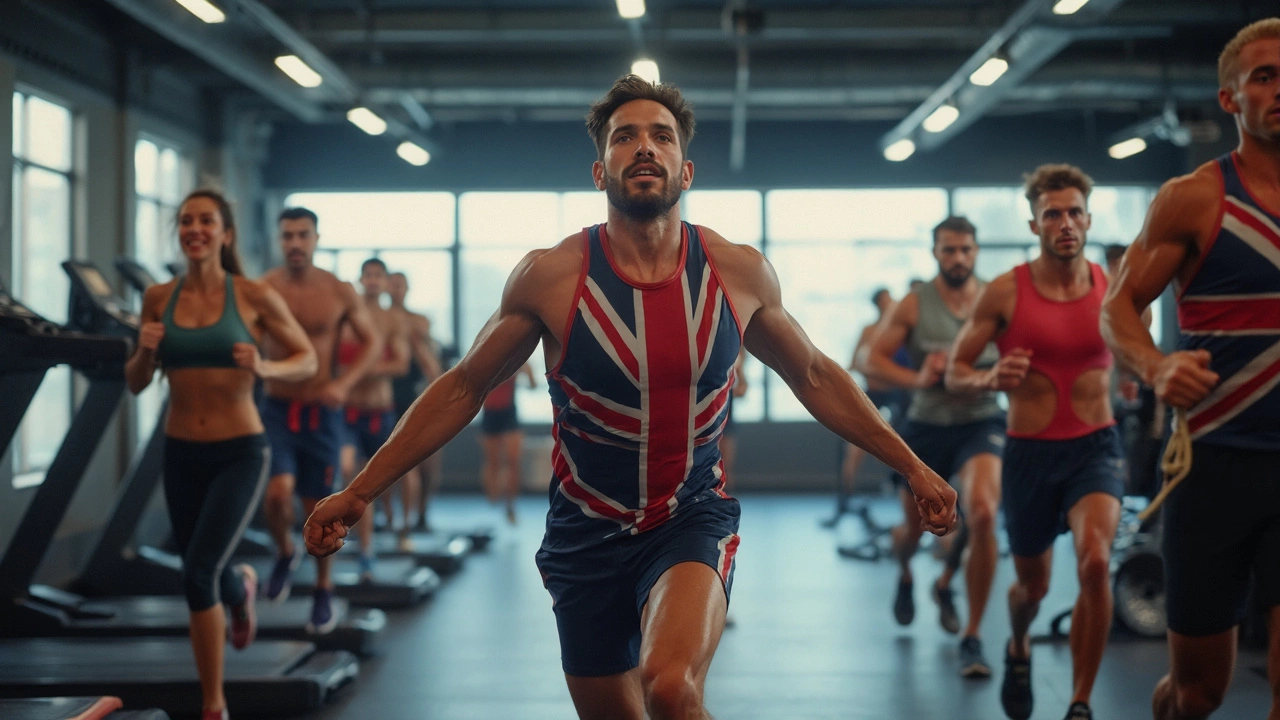
Everybody wants a shortcut to burning fat, but the real answer isn't as simple as picking one miracle move. The truth? Your body doesn't just dip into its fat stores because you jogged a mile. It depends on the intensity, duration, and even what you did earlier in the day. But, let’s get practical—some exercises just get the sweat (and fat) pouring off faster than others.
If you’ve ever left a HIIT class feeling like your heart was about to burst out of your chest, here’s why: your body craves oxygen after all those high-speed bursts, forcing it to keep burning calories (and fat) long after you stop. That’s called the “afterburn” effect. Steady, slow cardio—think walking or cycling at a comfortable pace—does burn fat too, but the magic really happens when you mix things up and push outside your comfort zone.
Want a quick tip? If you’re picking between jogging for an hour or doing twenty minutes of intense intervals, science is leaning toward intervals for maximum fat-burn. Just be ready to leave the comfort of your steady, casual sweat. You might be surprised how much of a difference it makes—not just on the scale, but in how you feel.
Let’s clear up a big myth: you don’t burn fat from one spot just by doing crunches or squats. Your body decides where to pull that fuel from, and it comes down to how you use energy, not what muscles you target. When you exercise, your body taps into two main fuels—carbs (glycogen) and fats (fatty acids)—to power you through. The mix depends on what you’re doing and how hard you’re pushing.
When you start moving, your body first uses up the carbs that are stored for quick energy. Once those run low—especially during longer or more intense workouts—it turns to fat as a backup. This is called “fat oxidation.” Steady cardio like walking or light cycling uses fat for fuel, but when you crank up the intensity (think sprints or tough circuits), you burn through carbs first, then switch to fat burning once you recover.
Your body keeps burning calories after training, especially if you go hard. This post-workout effect is called EPOC (Excess Post-Exercise Oxygen Consumption), or the “afterburn.” The harder your session, the longer your body stays revved up, burning more calories—even if you’re back on the couch.
Want to see some real numbers? Here’s a quick look at how your body uses energy during different types of weight loss exercises:
| Exercise Type | Main Fuel Source | Fat Burned (per hour) approx. |
|---|---|---|
| Walking | Fat | 200-300 calories |
| Jogging | Carbs & Fat | 400-600 calories |
| HIIT | Mainly Carbs during, Fat after | 500-900 calories (including afterburn) |
Your genetics, age, and metabolism also play a big part in how easily your body decides to let go of fat. But one thing’s for sure: the more you move and the harder you push, the more you’ll boost your body’s natural fat burning engine.
If you’re on a mission to find exercises that burn the most fat, you want to focus on moves that crank up your heart rate and work several muscle groups at once. Anything too easy or slow probably won’t cut it if major fat burning exercises are your goal. Let’s break down which workouts actually melt off the most calories and fat in the shortest time.
| Exercise | Estimated Calories Burned (per hour, 155 lb person) |
|---|---|
| HIIT | ~600-900 |
| Running (6 mph) | ~700 |
| Rowing (moderate effort) | ~400 |
| Circuit Training | ~550 |
| Cycling (vigorous) | ~700 |
Notice a trend? The more you push the pace or swap between intensity levels, the better the fat burning effects. One quick tip: add in some strength training, even if weight loss is your only goal. Muscle burns more calories at rest than fat, so building a little muscle goes a long way for quicker, lasting results.
You don’t need to spend hours in the gym, either. Just 20 to 30 minutes of the right exercises several times a week can light up your results. Mix and match these top fat burning exercises to keep things interesting and challenge your body in new ways. You’ll see faster changes and actually look forward to your workouts.

If you ask people in the gym which burns more fat—HIIT (High-Intensity Interval Training) or steady-state cardio—you’ll hear passionate arguments for both. But what do the studies actually say?
With HIIT workouts, you blast through short bursts of all-out effort followed by quick rests. A typical session might look like sprinting for 30 seconds and then walking for a minute, and repeating that pattern for 15-20 minutes. Steady-state cardio, on the other hand, is what you get when jogging, cycling, or swimming at a constant pace for 30-60 minutes straight.
The fat-burning winner? Here’s the scoop: research from the Journal of Obesity in 2011 found that people doing HIIT burned more belly fat and improved their metabolic health more than those doing steady cardio—even when their total workout time was shorter. HIIT creates what’s called EPOC (excess post-exercise oxygen consumption), or the "afterburn effect," which keeps you torching calories long after you leave the gym.
“High-intensity interval training leads to greater fat loss in less time than traditional cardio. The afterburn can continue for up to 24 hours.” — Dr. Jason Sawyer, Exercise Physiologist
Check out this side-by-side:
| Workout | Calories Burned (30min, 155 lbs) | Afterburn Effect |
|---|---|---|
| Steady-State Cardio (Jogging) | 298 | Low |
| HIIT (Intervals/Rower) | 360 | High (up to 15% extra) |
HIIT workouts tend to be shorter (great if you can't stand an hour on the treadmill), but they’re tougher to recover from, so don’t feel like you have to go all out every day. Aim for 2-3 HIIT sessions a week, mixed in with lighter cardio or recovery days.
Bottom line? HIIT torches more fat in less time, gives you that afterburn, and can even boost your fitness faster. But steady cardio still plays a role, especially for building endurance or just clearing your head outside. It's not all or nothing—mixing both can keep your routine working for you and not against you.
If you’re serious about burning more fat, a few little tweaks can make a huge difference. It’s not about living at the gym, but working smarter with your routines. Here’s how you squeeze the most out of every sweat session and really ramp up your fat burning exercises:
If you want a big-picture look at how different exercises measure up, check out this quick calorie burn cheat sheet. Remember: higher calories burned = bigger fat-burn potential, especially when combined with a solid diet and muscle-building moves.
| Activity | Calories Burned (30 min, average) |
|---|---|
| HIIT (High Intensity Interval Training) | 350-450 |
| Running (6 mph) | 300-400 |
| Stationary Cycling (vigorous) | 250-350 |
| Brisk Walking | 120-150 |
| Weight Lifting | 90-130 |
No single magic trick melts the pounds away overnight, but combining these tips with a solid routine of weight loss and fat burning exercises cranks up your results. Start simple, stay consistent, and the fat has nowhere left to hide.